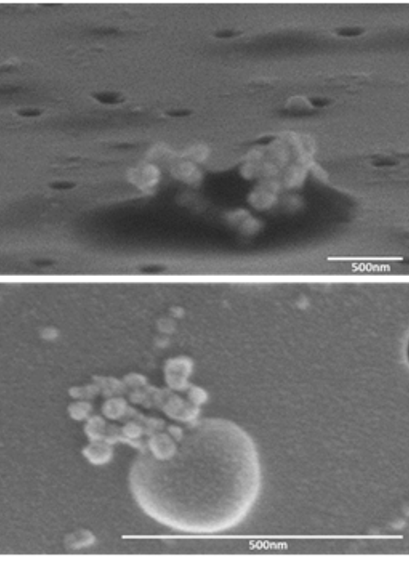Organic particles modulate soot mixing in the atmosphere
Submitter:
Zaveri, Rahul — Pacific Northwest National Laboratory
Area of research:
Aerosol Properties
Journal Reference:
Science
In the atmosphere, individual soot particles emitted from human activities often encounter and combine with organic material, forming soot-containing particles. A research team led by scientists from the U.S. Department of Energy and Michigan Technological University established a link between the viscosity of the organic material and its distribution within the soot-containing particle. This mixing configuration is important because it alters the particles’ ability to absorb and scatter solar radiation. The scientists discovered that organic material of low viscosity partially or completely encapsulated soot particles, while highly viscous organic material often attaches to the surface of co-existing soot particles or does not even stick together, remaining separate.
Impact
Soot particles strongly absorb solar radiation and, therefore, affect Earth’s energy balance. However, their optical properties strongly depend on how the individual soot particles mix with other particles in the atmosphere (internal mixing). This study identified the viscosity of organic matter in the atmosphere as a key factor that influences the distribution of organic matter within soot-containing particles. These findings will improve aerosol models that predict the mixing state of soot via condensation and coagulation processes, thereby improving radiative forcing calculations and climate predictions.
Summary
Organic particles in the atmosphere exhibit a wide range of viscosity, depending upon their chemical composition and the surrounding environmental conditions, such as temperature and relative humidity. As soot particles combine with organic particles in the atmosphere, the distribution of soot and organic material in the combined particle determines its overall optical properties and radiative forcing—warming or cooling effects. Taking scanning electron microscopy images at different view angles, researchers investigated soot-containing particles collected during the DOE’s Carbonaceous Aerosols and Radiative Effects Study (CARES) in Sacramento, California, in June 2010. Their results indicate that organic material of low to intermediate viscosity often engulfed soot, while highly viscous organic material attaches to the soot surface or remains separated from it. Soot particles engulfed by low-viscosity organics become coated and can be approximately represented by a “core-shell” model, where the soot particles are at the center of an idealized spherical shell made of the organic material. In contrast, increasing viscosity results in limited (partial) engulfing, and hence the formation of non–core-shell configurations. These findings establish a link between the viscosity of organic material and its distribution when mixed internally with soot particles. Accounting for the effects of viscosity of organic matter on the mixing state of soot-containing particles in numerical models will improve estimates of radiative forcing from soot.


